The future will be all about electromobility
Our concept for exciting electromobility. For increased everyday performance and more sustainable mobility.
Our concept for exciting electromobility. For increased everyday performance and more sustainable mobility.
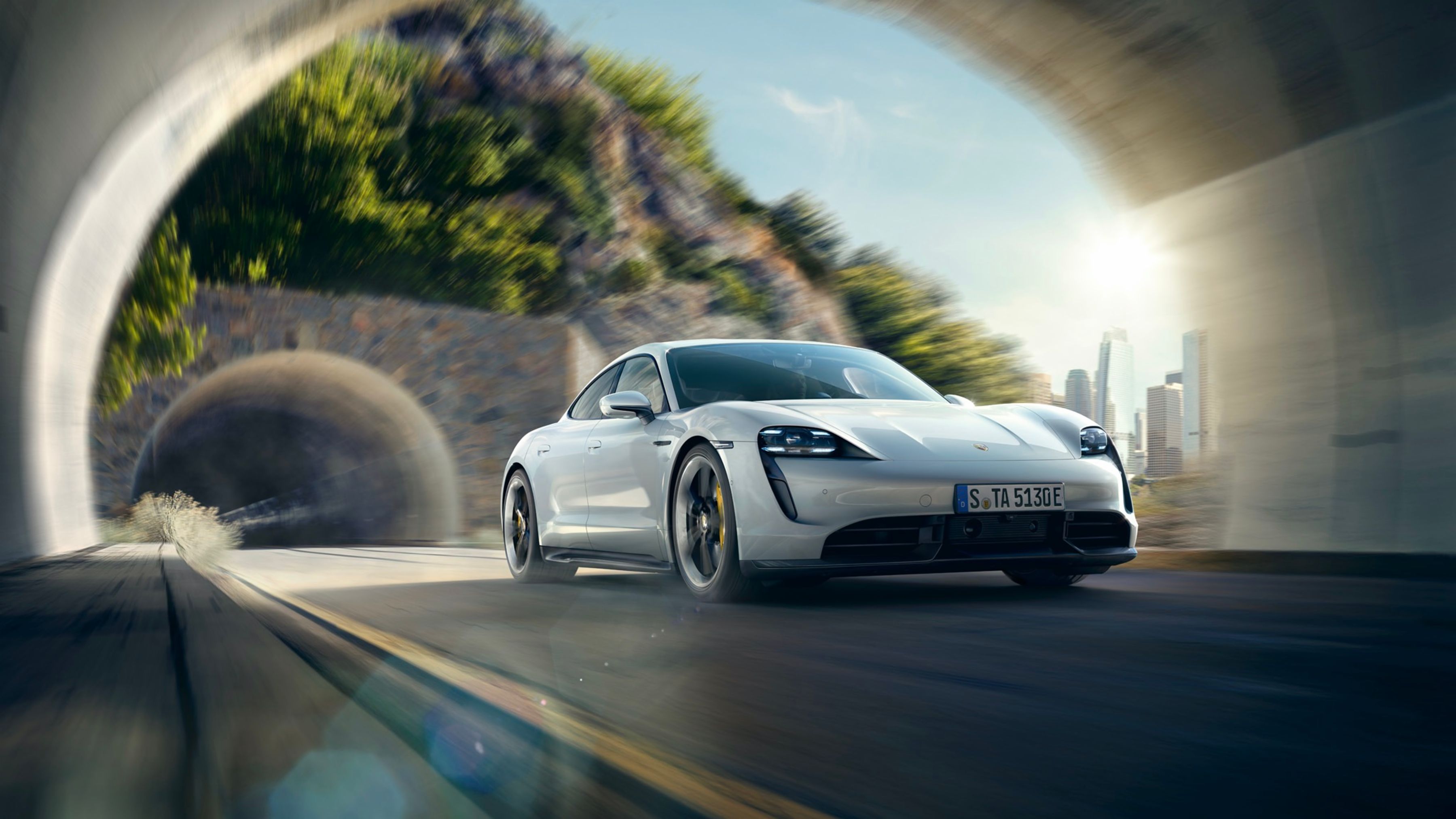
As a pioneer of sustainable mobility, Porsche has set itself ambitious goals: by 2025, half of all new Porsche vehicles will be fitted with an electrified drive system – either fully electric or with plug-in hybrid technology. In 2020, a third of all Porsche vehicles sold were electrified.
Sustainability and performance make up a complete package at Porsche. Superior driving dynamics are intrinsic to both the plug-in hybrid models of the Cayenne and Panamera and the Taycan electric sports car. The same will apply to future electrified model lines.
.jpeg/jcr:content/EP20MODOX0016_low%20(1).jpeg)
In 2019, the Taycan electric sports car was the first production vehicle to come with a system voltage of 800 volts. This technology ensures high continuous power and significantly reduces charging time. That’s because Porsche felt it would be better to achieve shorter travel times through rapid recharging stops rather than to achieve an unnecessarily long range at the cost of ever larger and heavier batteries. Its permanent magnet synchronous motors ensure maximum power density and efficiency as well as the best possible reproducibility of driving performance. The two-speed transmission allows rapid acceleration and a high top speed.
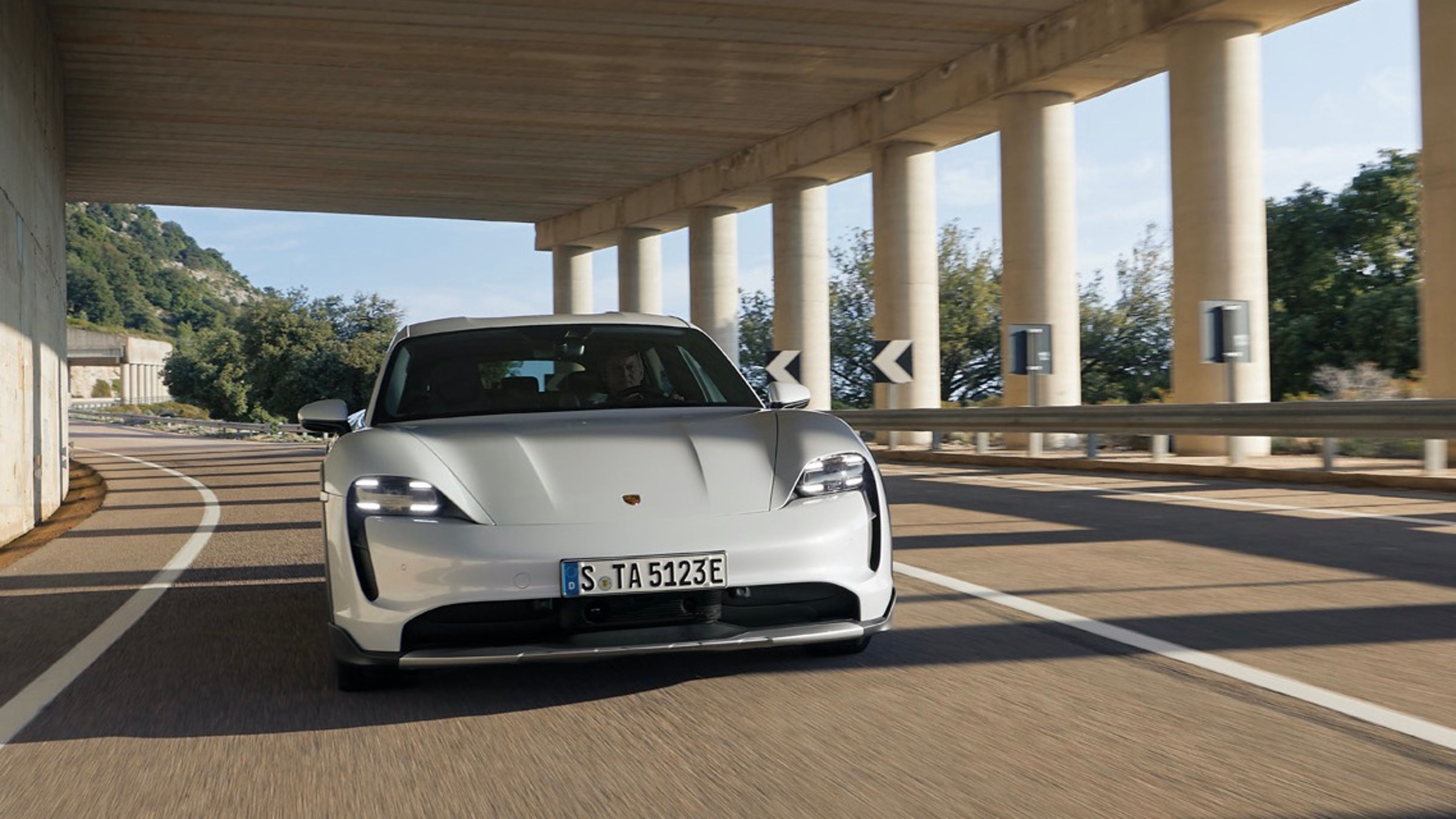
The Taycan Cross Turismo combines the Porsche e-performance of the Taycan sports saloon with even more everyday practicality. The model is aimed at customers with an active lifestyle. The all-wheel-drive chassis, with its air suspension, is height-adjustable.
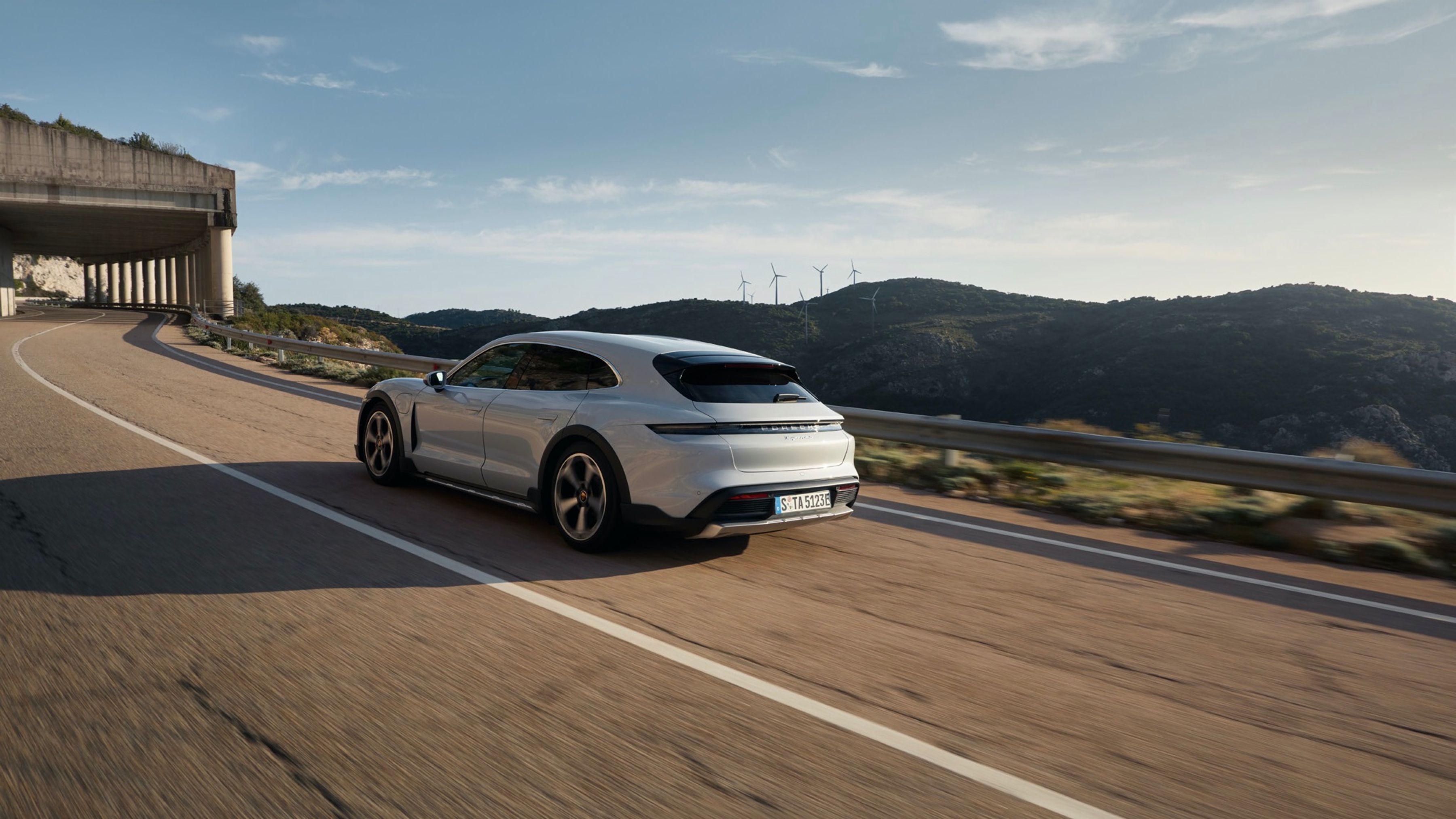
With the Taycan Sport Turismo, the model family now includes three body variants. The new derivative is aimed at those who want a similar level of everyday practicality as the Taycan Cross Turismo, but do not want to miss out on the ‘on-road’ performance of the Taycan Sports Saloon. The GTS is the first member of the Taycan Sport Turismo family to be launched.
The new derivative shares the sporty silhouette, rearward-sloping roof line and functional design of the Taycan Cross Turismo. The headroom in the rear is more than 45 millimetres higher than that of the Taycan sports saloon, and the load capacity under the large tailgate is more than 1,200 litres. However, the Taycan Sport Turismo does not have off-road design elements.
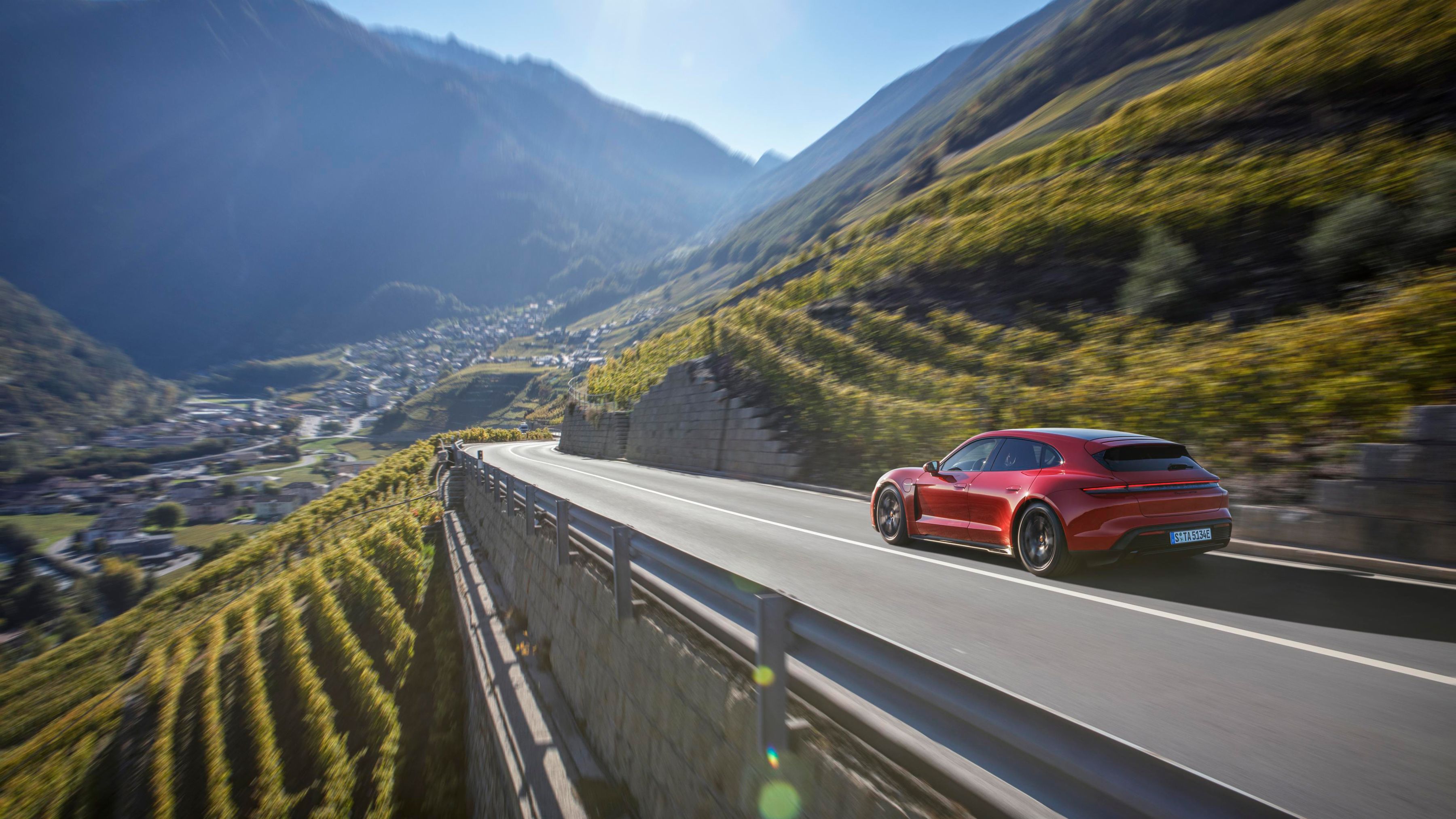
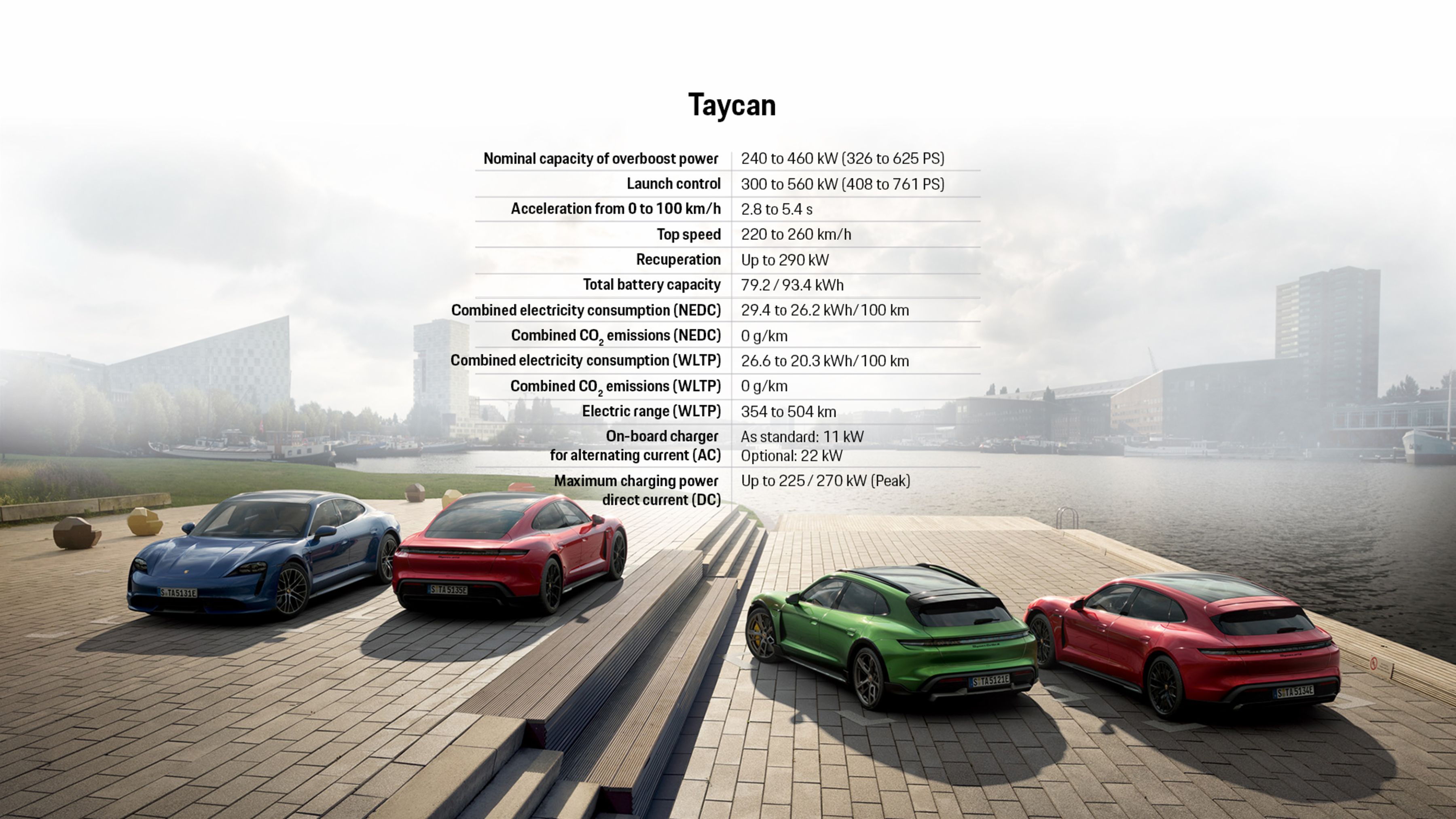

Both model series have the same electric motor at the heart of their plug-in drive architecture. Integrated into the transmission, it delivers 100 kW (136 PS). The maximum torque is 400 Nm and it allows both fully electric driving and an additional boost for the combustion engine. The electric motor is powered by the externally rechargeable battery, the total capacity of which has been increased to 17.9 kWh.
Porsche entered the SUV market almost two decades ago with the Cayenne and set standards in the premium SUV segment in 2014 with one of the first plug-in hybrids. The electric drive has priority: the Cayenne and the Cayenne Coupé automatically start in E-Power mode – for fully electric driving. When more power is needed or if the driver switches to Hybrid, Sport or Sport Plus driving mode, the combustion engine kicks in. In the Cayenne E-Hybrid, this is a three-litre V6 turbo with 250 kW (340 PS). The resulting overall system power is 340 kW (462 PS). The Cayenne Turbo S E-Hybrid models have a four-litre V8 biturbo engine with 404 kW (550 PS), which results in a total output of 500 kW (680 PS) in combination with the hybrid system.
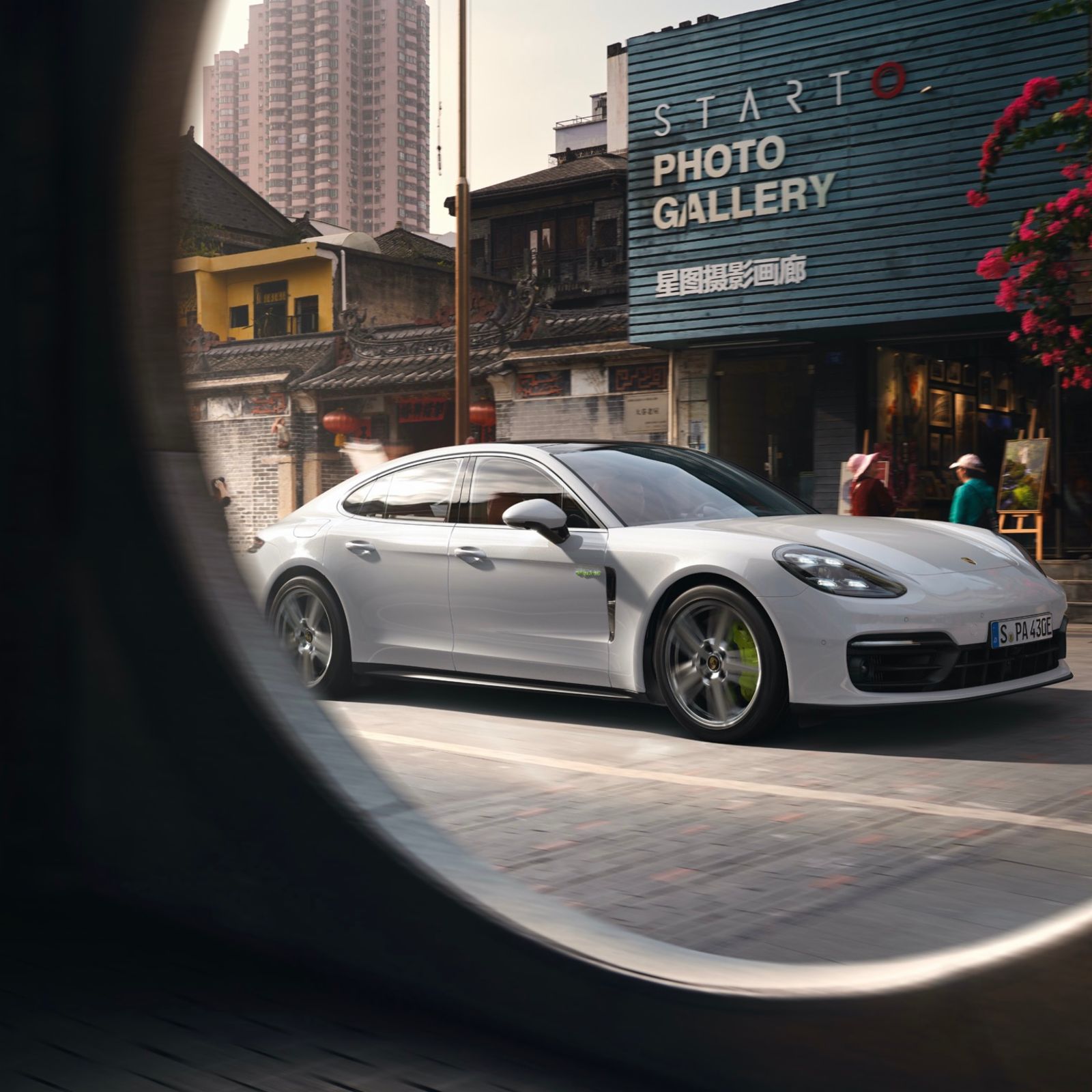
The Panamera combines the performance of a sports car with the comfort of a luxury saloon. Porsche offers plug-in hybrid Panamera models in three body variants – the Sport saloon, Executive (long-wheelbase) and Sport Turismo. The electric motor comes in the following combinations:
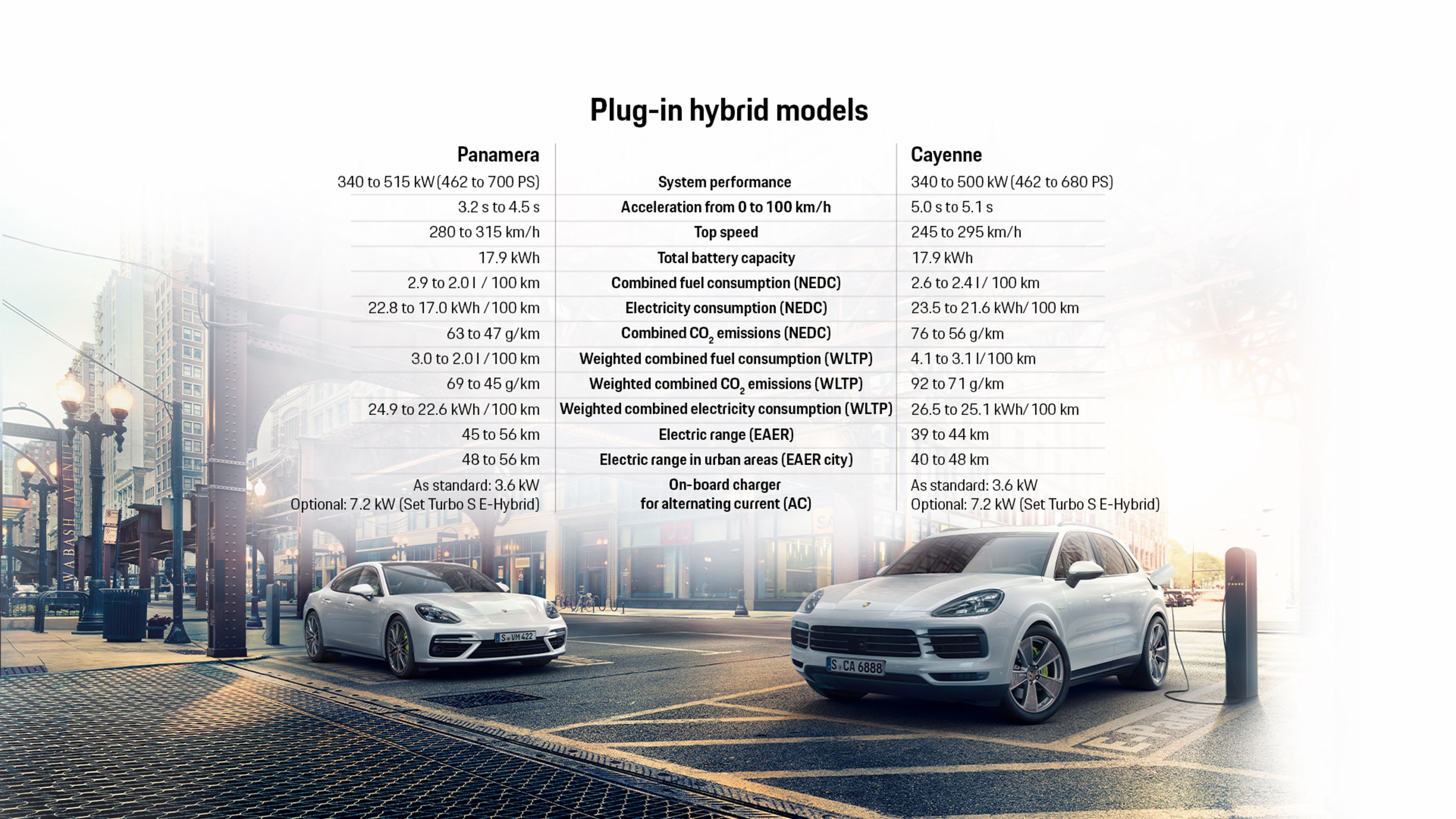
The My Porsche App and services of Porsche Connect (available depending on country) offer convenient remote operation of various vehicle functions. The My Porsche App provides real-time information on the location, availability and prices of charging stations.
Here is an overview of the functions of the My Porsche App:
The E-Control service is also available via the My Porsche App, Porsche Communication Management (PCM) and My Porsche. This offers other useful functions. For example, the driver can call up current information about the state of charge (SoC), the current charging rate and the electric range of the car. They can also set up to five departure timers, which can be used to set the state of charge on departure and the interior temperature required. In addition, charging can be controlled with user-defined charging profiles: when the driver sets a desired state of charge, the Taycan charges up to that SoC every time. If no long journeys are planned, it is advisable to enter a value below 100 per cent here to conserve the battery. With the location-based charging profiles, the selected setting can be restricted, for example to home.
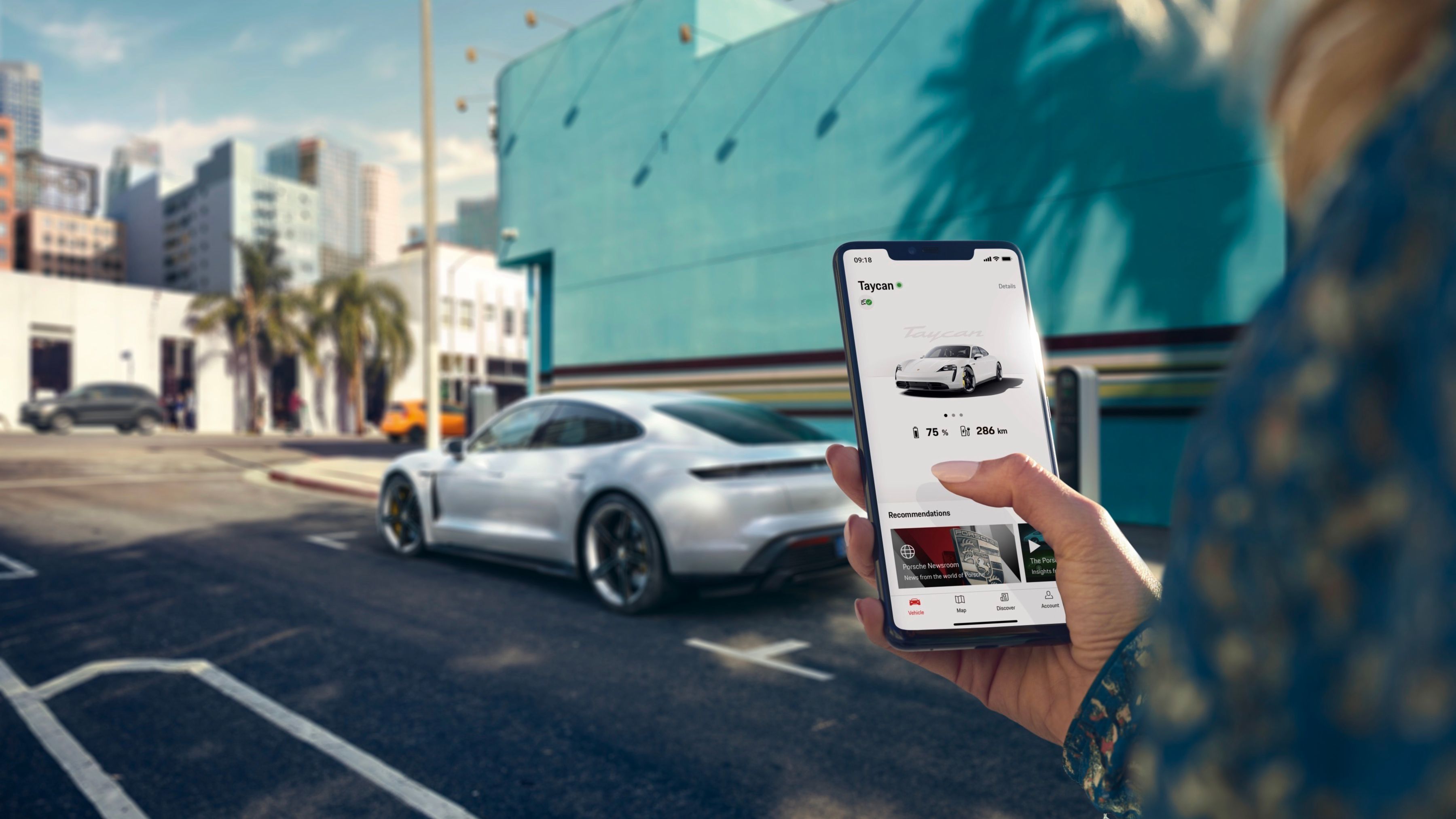
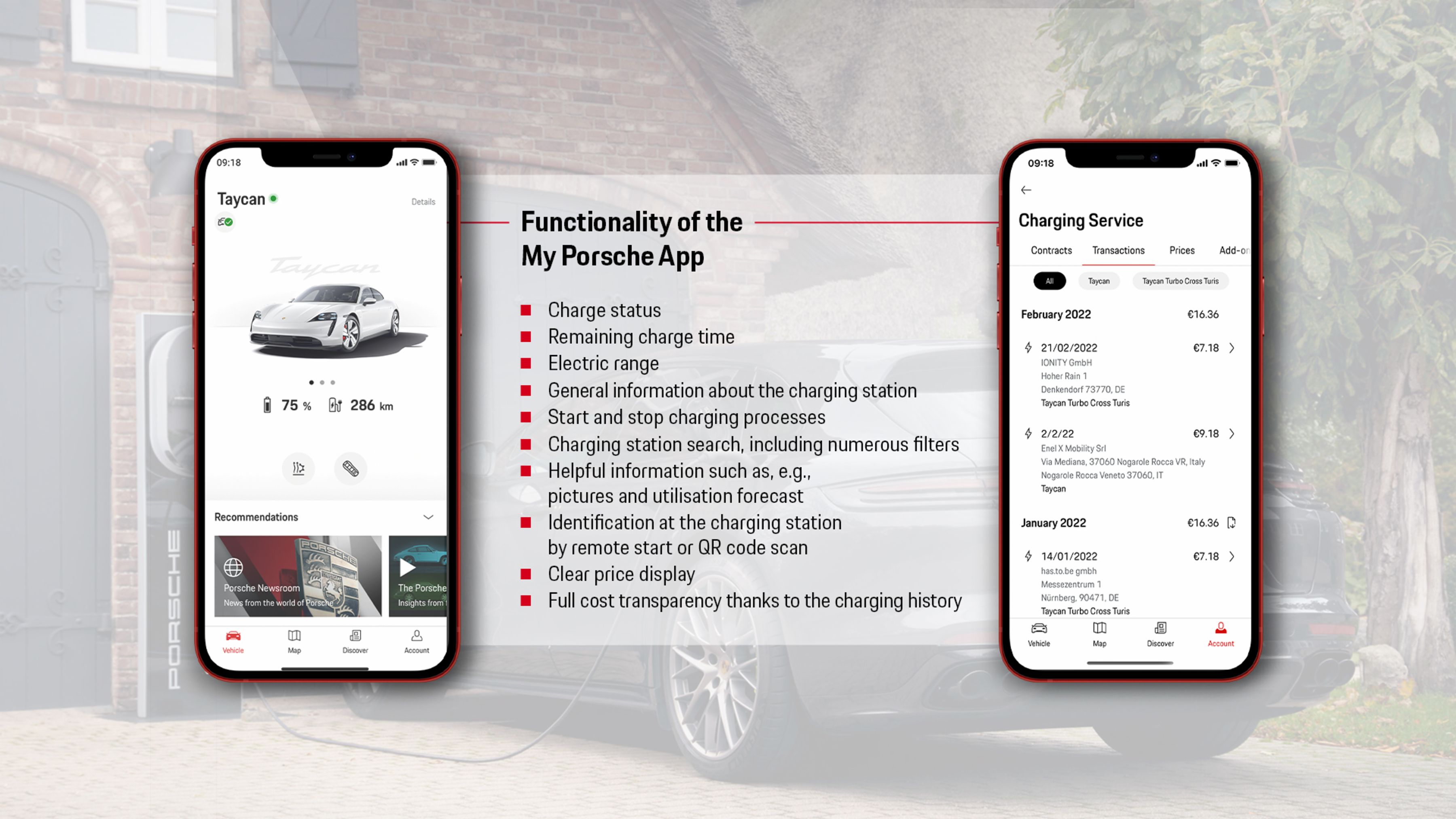
In the Porsche Taycan, the Porsche Charging Planner (availability dependent on country) enables particularly intelligent control with regard to fast charging when away from home. As soon as route guidance is active, the system helps the driver to travel at ease and without unnecessary hold-ups, even on long journeys.
First, the navigation system calculates the quickest or shortest route using real-time traffic information. It is also possible to enter a desired charging status at the destination. If the calculated charging status is below this target value, the Charging Planner schedules charging stops so that the car has the required range upon arrival at the destination. To fully utilise the maximum charging capacity available, the system also regulates the battery preconditioning well before the scheduled stops for charging.
The planning system takes account of the power available at the stations – and the charging time calculated from this – to reach the optimum charging range up to 80 per cent. It also includes stations that are not directly on the route. This way, stations with higher charging capacity can be given priority and the overall journey time can be reduced even further. If a desired arrival time is entered, the respective charging times are taken into account for the journey.
The Charging Planner is active throughout the trip and continually updates the availability of charging stations. The online functionality required for the Charging Planner is included with the Taycan for three years as part of the Porsche Connect Package.
The Charging Planner can also suggest charging stops offline thanks to the locally stored database entries. For even more convenience, the Charging Planner is also available in the My Porsche App. This means that journeys can be easily planned in advance at home. The data is then transmitted to the vehicle.
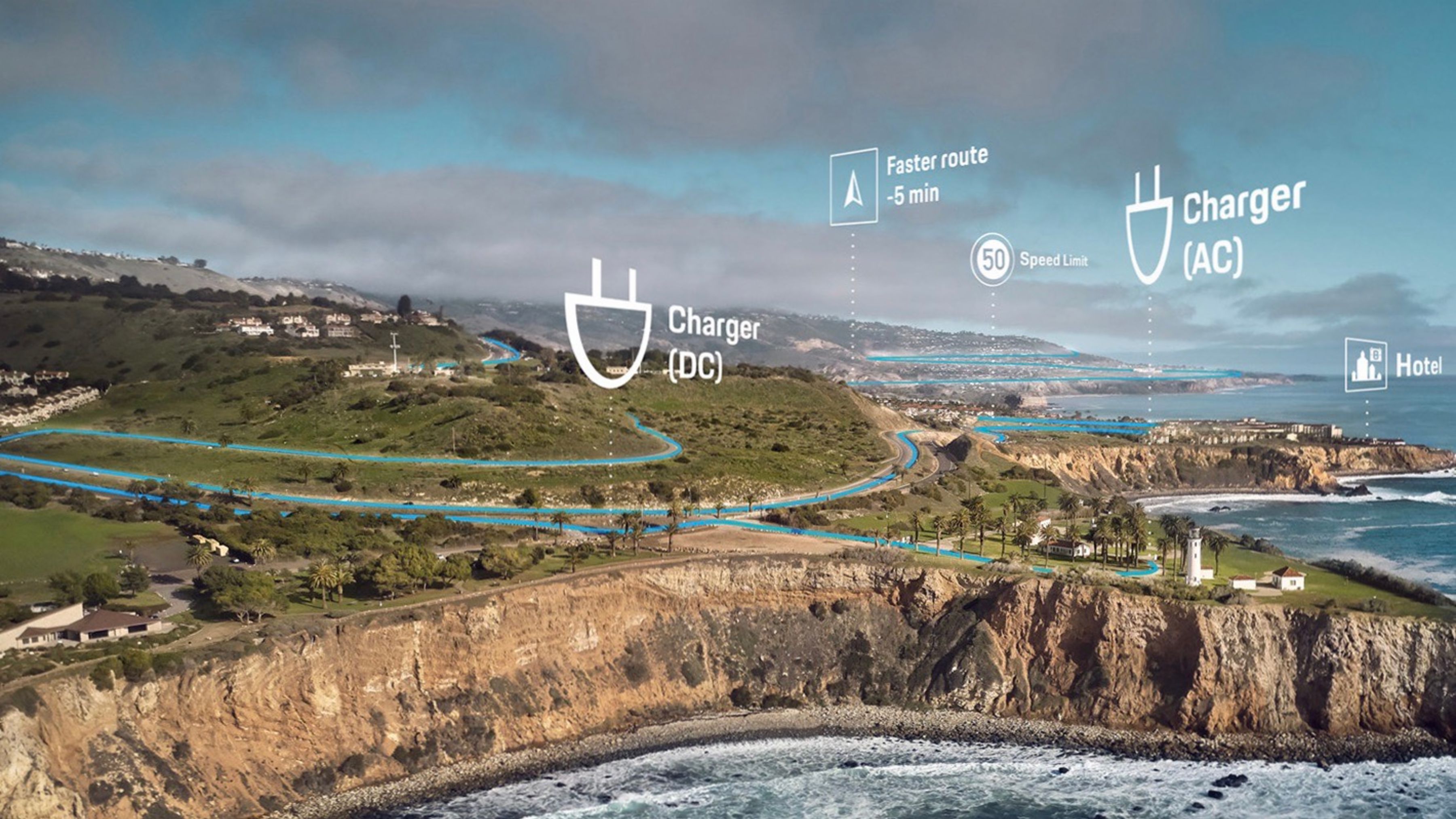
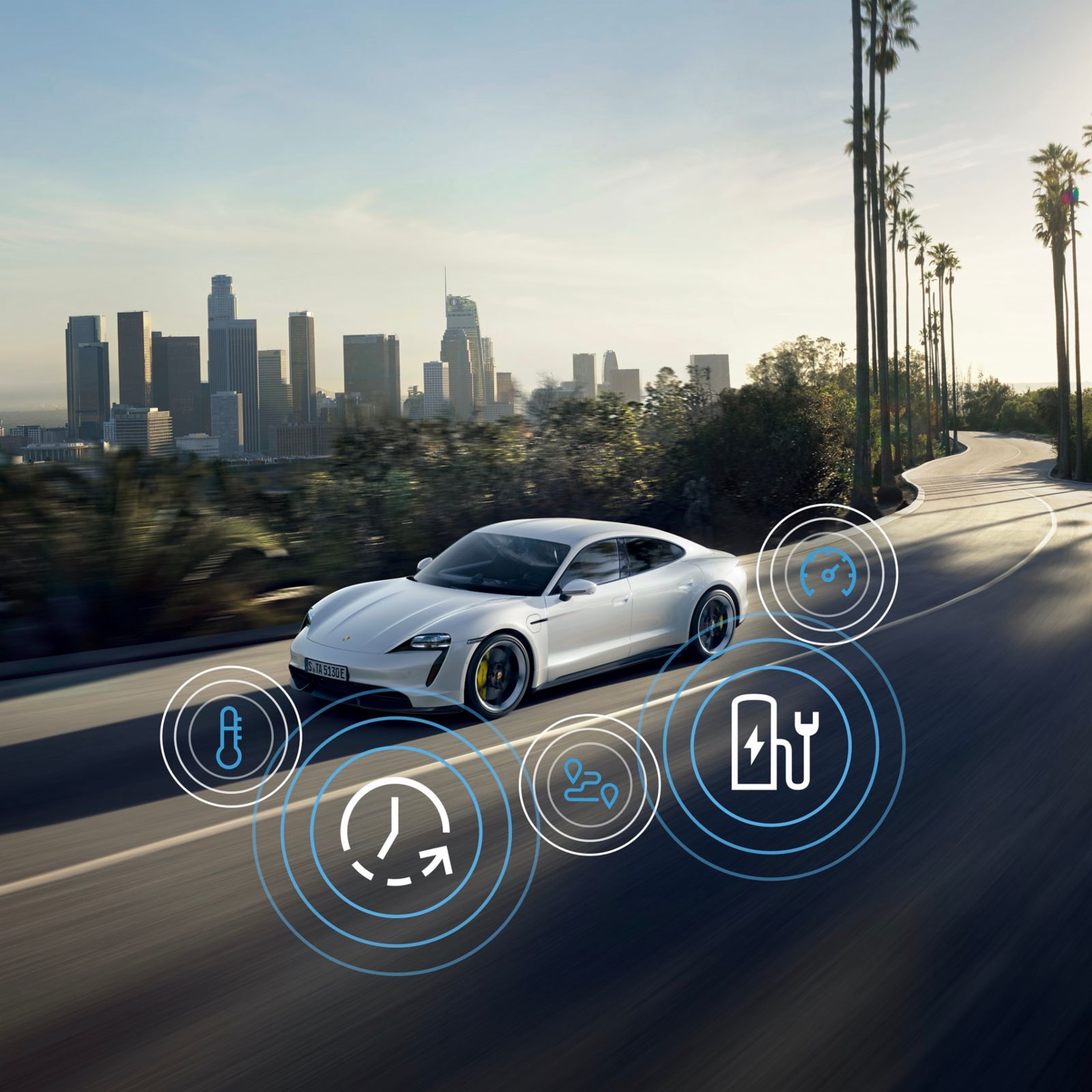
The Porsche Intelligent Range Manager (availability dependent on country) can be optionally added to the range of functions offered by the Charging Planner. This operates constantly in the background when route guidance is active and optimises all system parameters once again to achieve the shortest travel time in the maximum comfort.
If the destination can be reached more quickly by adjusting the driving style and vehicle characteristics to minimise the number of charging stops required, the Porsche Intelligent Range Manager suggests this. For example, the system can recommend a different driving mode, make more efficient settings for the air conditioning and also specify the maximum speed in Range driving mode. Under ‘Alternative Routes’, the faster route can be called up in the Porsche Communication Management (PCM).